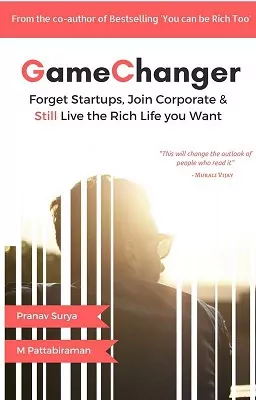A large number of PPF investors tend to invest Rs. 1.5 Lakh between April 1st and April 5th in an attempt to “maximize” the interest advantages of PPF. Before you follow suit, take into consideration the following factors! This conversation is also relevant if you’re looking to optimize your PPF investments throughout the financial year.
If you invest Rs. 1.5 lakh during the initial five days of April, the entire amount of Rs. 1.5 lakh (along with the existing balance) will earn interest for the entire fiscal year. This principle and discussion are also applicable to the Sukanya Samriddhi Yojana scheme.
If investments are made in a staggered manner, the interest paid would be reduced. Nonetheless, the discrepancy is relatively minor, even without considering the effects of inflation over a 15-year period: investing in a PPF before the 5th versus investing after the 5th. Additionally, it is worth comparing Sukanya Samriddhi Yojana and PPF through an illustration.
The issue with maximizing investments in PPF or SSY lies in potentially eliminating any opportunity to outpace inflation. In other words, while our savings in these instruments will undoubtedly increase, our future expenses will likely grow even faster. This results in an excessive amount of fixed income within our portfolio. It is as if we are entering a race where the outcome is predetermined: assured failure.
Already interest rates for both instruments have come down considerably. Even if it goes up for a few years in the immediate future (like in the first quarter of 2023), expecting 8% returns from these over the next decade or more would be pretty unreasonable. Also, see: Worried about low PPF interest rate? Here is why it could drop further
Even if one does get 8% from PPF, which is a reasonably good inflation estimate, we will still not get zero real return from the corpus. This is because the maximum investment limit is only Rs. 1.5 lakh and the amount anyone reading this must invest per year would be much more.
So the only chance of beating inflation is having a 50-60% equity portfolio if the goal is 10+ plus years away, at least initially. If one can pull this off and still have Rs. 1.5 lakh to invest in PPF, it is ‘okay’. The sad reality is most people who have crossed 30 have debt-heavy portfolios. Despite this, they cannot stop themselves from maximising PPF each financial year. The lure of an EEE* instrument is hard to resist, and very few investors realise the consequences of their actions.
* Technically, in the new tax regime, PPF is only TEE (taxable, exempt, exempt)
A simple thumb rule for retirement is, if X = annual expenses that will persist all your life (this includes needs and want but not EMIs or school fees), then X should be the minimum amount you invest for retirement. And we should increase this X investment by at least 10% each year.
The investment should be in an initial asset allocation of 50-70% equity decreasing systematically, and we should plan this variable asset allocation from day one. See Basics of portfolio construction: A guide for beginners.
Rushing to invest Rs. 1.5 lakh within the first five days of April (or over the course of the financial year) would, for most investors, reduce all chances of getting the necessary equity allocation
Investors will need to look beyond the tax-free comfort of high returns from PPF, which is insufficient for financial freedom after retirement. This does not mean there is no place for PPF in retirement or a child’s future portfolio.
PPF & SSY have an excellent feature not exploited enough: you can invest Rs. Five hundred in one FY and Rs. 1.5 lakh in another. We can use this to secure the gains from equity via rebalancing from time to time. See: This helpful feature of PPF deserves more attention!
The same benefit allows us to initially invest less in PPF (and more into equity) and gradually increase the PPF investment to reduce portfolio risk. See: Why I maximised PPF investment only after ten years.
The longer investors keep maximising PPF, the more they will lose time getting used to equity volatility. Beyond a point, it would become a risk to redeem from PPF or other forms for fixed income and invest in equity: Should I withdraw from PPF and invest in equity MF to reach my asset allocation goal?
Therefore we recommend investors take a closer look at their goals, decide on an asset allocation and do their best to align their portfolio towards that asset allocation without rushing to invest Rs. 1.5 lakh in the first few days of April or throughout FY 2021-2022.
Proper asset allocation is the key to successful investing. Not tax-saving*, not tax-free guaranteed returns. Investments that look secure and comforting now may come and hurt you hard later in life. * In any case, tax saving is dead now, thanks to the new tax regime.
Additional PPF resources
Do share this article with your friends using the buttons below.
🔥Enjoy massive discounts on our courses and robo-advisory tool! 🔥
Use our Robo-advisory Excel Tool for a start-to-finish financial plan! ⇐ More than 1000 investors and advisors use this!
New Tool! => Track your mutual funds and stocks investments with this Google Sheet!
- Follow us on Google News.
- Do you have a comment about the above article? Reach out to us on Twitter: @freefincal or @pattufreefincal
- Join our YouTube Community and explore more than 1000 videos!
- Have a question? Subscribe to our newsletter with this form.
- Hit ‘reply’ to any email from us! We do not offer personalized investment advice. We can write a detailed article without mentioning your name if you have a generic question.
Get free money management solutions delivered to your mailbox! Subscribe to get posts via email!
Explore the site! Search among our 2000+ articles for information and insight!
About The Author
 Dr M. Pattabiraman(PhD) is the founder, managing editor and primary author of freefincal. He is an associate professor at the Indian Institute of Technology, Madras. He has over nine years of experience publishing news analysis, research and financial product development. Connect with him via Twitter or Linkedin, or YouTube. Pattabiraman has co-authored three print books: (1) You can be rich too with goal-based investing (CNBC TV18) for DIY investors. (2) Gamechanger for young earners. (3) Chinchu Gets a Superpower! for kids. He has also written seven other free e-books on various money management topics. He is a patron and co-founder of “Fee-only India,” an organisation promoting unbiased, commission-free investment advice.
Dr M. Pattabiraman(PhD) is the founder, managing editor and primary author of freefincal. He is an associate professor at the Indian Institute of Technology, Madras. He has over nine years of experience publishing news analysis, research and financial product development. Connect with him via Twitter or Linkedin, or YouTube. Pattabiraman has co-authored three print books: (1) You can be rich too with goal-based investing (CNBC TV18) for DIY investors. (2) Gamechanger for young earners. (3) Chinchu Gets a Superpower! for kids. He has also written seven other free e-books on various money management topics. He is a patron and co-founder of “Fee-only India,” an organisation promoting unbiased, commission-free investment advice.
Our flagship course! Learn to manage your portfolio like a pro to achieve your goals regardless of market conditions! ⇐ More than 3000 investors and advisors are part of our exclusive community! Get clarity on how to plan for your goals and achieve the necessary corpus no matter what the market condition is!! Watch the first lecture for free! One-time payment! No recurring fees! Life-long access to videos! Reduce fear, uncertainty and doubt while investing! Learn how to plan for your goals before and after retirement with confidence.
Our new course! Increase your income by getting people to pay for your skills! ⇐ More than 700 salaried employees, entrepreneurs and financial advisors are part of our exclusive community! Learn how to get people to pay for your skills! Whether you are a professional or small business owner who wants more clients via online visibility or a salaried person wanting a side income or passive income, we will show you how to achieve this by showcasing your skills and building a community that trusts you and pays you! (watch 1st lecture for free). One-time payment! No recurring fees! Life-long access to videos!
Our new book for kids: “Chinchu gets a superpower!” is now available!

Most investor problems can be traced to a lack of informed decision-making. We have all made bad decisions and money mistakes when we started earning and spent years undoing these mistakes. Why should our children go through the same pain? What is this book about? As parents, what would it be if we had to groom one ability in our children that is key not only to money management and investing but to any aspect of life? My answer: Sound Decision Making. So in this book, we meet Chinchu, who is about to turn 10. What he wants for his birthday and how his parents plan for it and teach him several key ideas of decision making and money management is the narrative. What readers say!

Must-read book even for adults! This is something that every parent should teach their kids right from their young age. The importance of money management and decision making based on their wants and needs. Very nicely written in simple terms. – Arun.
Buy the book: Chinchu gets a superpower for your child!
How to profit from content writing: Our new ebook for those interested in getting side income via content writing. It is available at a 50% discount for Rs. 500 only!
Want to check if the market is overvalued or undervalued? Use our market valuation tool (it will work with any index!), or you buy the new Tactical Buy/Sell timing tool!
We publish monthly mutual fund screeners and momentum, low volatility stock screeners.
About freefincal & its content policy Freefincal is a News Media Organization dedicated to providing original analysis, reports, reviews and insights on mutual funds, stocks, investing, retirement and personal finance developments. We do so without conflict of interest and bias. Follow us on Google News. Freefincal serves more than three million readers a year (5 million page views) with articles based only on factual information and detailed analysis by its authors. All statements made will be verified from credible and knowledgeable sources before publication. Freefincal does not publish any paid articles, promotions, PR, satire or opinions without data. All opinions presented will only be inferences backed by verifiable, reproducible evidence/data. Contact information: letters {at} freefincal {dot} com (sponsored posts or paid collaborations will not be entertained)
Connect with us on social media
Our publications
You Can Be Rich Too with Goal-Based Investing
 Published by CNBC TV18, this book is meant to help you ask the right questions and seek the correct answers, and since it comes with nine online calculators, you can also create custom solutions for your lifestyle! Get it now.
Published by CNBC TV18, this book is meant to help you ask the right questions and seek the correct answers, and since it comes with nine online calculators, you can also create custom solutions for your lifestyle! Get it now.
Gamechanger: Forget Startups, Join Corporate & Still Live the Rich Life You Want
 This book is meant for young earners to get their basics right from day one! It will also help you travel to exotic places at a low cost! Get it or gift it to a young earner.
This book is meant for young earners to get their basics right from day one! It will also help you travel to exotic places at a low cost! Get it or gift it to a young earner.
Your Ultimate Guide to Travel
 This is an in-depth dive analysis into vacation planning, finding cheap flights, budget accommodation, what to do when travelling, and how travelling slowly is better financially and psychologically with links to the web pages and hand-holding at every step. Get the pdf for Rs 300 (instant download)
This is an in-depth dive analysis into vacation planning, finding cheap flights, budget accommodation, what to do when travelling, and how travelling slowly is better financially and psychologically with links to the web pages and hand-holding at every step. Get the pdf for Rs 300 (instant download)


